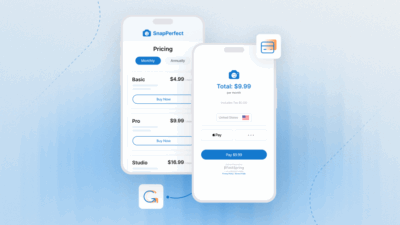The success of many SaaS businesses is dependent on how well they can effectively acquire and retain new customers. When it is set up correctly, recurring billing can fulfill both of these requirements by not only supporting your business with a consistent revenue stream but also boosting customer loyalty with a hassle-free collection process.
It seems then, that recurring billing is one proven way to grow your business. But before you jump straight into implementing a subscription billing model, why not make the most of your time by educating your business on the most common recurring billing mistakes and avoiding them from the start by following these tips?
Brand the entire billing process.
We’re all aware of how big of a role trust plays in the checkout process, but what some businesses forget to recognize is that credibility is just as important after the sale. Branding all statements and processes helps your customers know who is withdrawing money from their account. Even if your company doesn’t send statements, a simple branded email sent prior to the recurring payment will be helpful in reminding your customer that they’ve set up a subscription for your digital product or service.
You’ll also want to make sure you reference the charges in your emails – this includes listing the billed amount and the reason for the charge. Being transparent about billing details helps put your customers at ease which can have a positive impact on reducing chargebacks.
Plan for unintentional churn.
Unfortunately, the nature of recurring billing is such that churn is inevitable. Churn occurs when customers intentionally cancel their subscriptions, as well as when a credit or debit card is inaccessible.
Active churn – like the kind when customers decide to leave your business is easy to spot. An increase in the number of customer complaints and an uptick in subscription cancellation are “loud” telltale signs. Unintentional churn, on the other hand, is often harder to spot because it isn’t as obvious and slowly chips away at your customer base. Some examples of this inactive churn include debt and credit card expiration or payment cancellations from card theft, loss, or suspicious activity.
While you will inevitably run into an issue where the debit or credit card on file cannot be billed, it’s important to have a strategy in place on how to resolve that. Partnering with a full-service SaaS ecommerce platform, like FastSpring, with built-in dunning management capabilities, allows your business to automatically alert your subscribers when their payment failed to process. This, in turn, will help free up business resources – allowing you to focus more time on scaling other parts of your digital business.
Compose effective dunning emails.
Recurring billing is conveniently set up so that your customers don’t have to worry about making repeat payments, but this convenience may also cause your subscribers to forget to update their debit or credit card information before it expires. Sending an automated email is a great way to give your customers a gentle reminder that they need to update their payment information to continue their subscription.
Your email should be friendly in tone but also instill a sense of urgency. Remind the customer that their service will lapse unless payment is received by a certain date and provide a link to the online payment page to encourage immediate action. Some customers may require a single email reminder while others require multiple emails. The important thing is to notify your subscribers of the issue so they can take action towards reversing the unintended cancellation.
Make cancellation simple.
Regardless of the reason, it’s important to make the cancellation process as painless as possible.
One way is to avoid forcing the client to call to cancel their service. While that might delay the inevitable, it’s only going to infuriate the customer when they eventually do take action toward cancellation. Instead, offer more straightforward methods (like self-serve) when canceling subscriptions. That’s not to say customers shouldn’t be reminded of the value offered by your service, but asking them to reconsider is different than making cancellation unnecessarily difficult. In the long run, you’ll leave customers with a better impression of your SaaS company by letting them go without making it an ordeal.
In reality, mistakes are bound to occur, but taking steps to avoid the most common recurring billing errors can minimize the impact on your SaaS business’s revenue and help improve your overall customer retention rate.
Interested in seeing how partnering with FastSpring can help you monetize the complete customer lifecycle and grow your business? Request a demo today!









